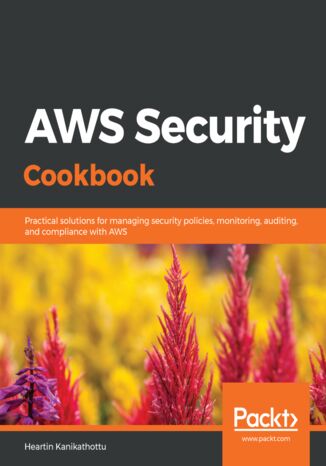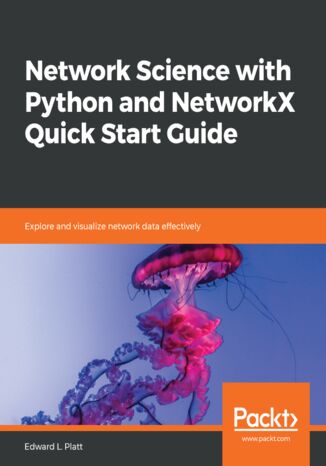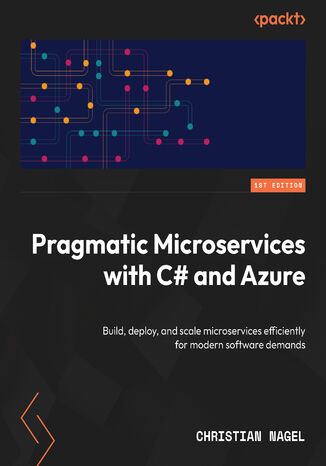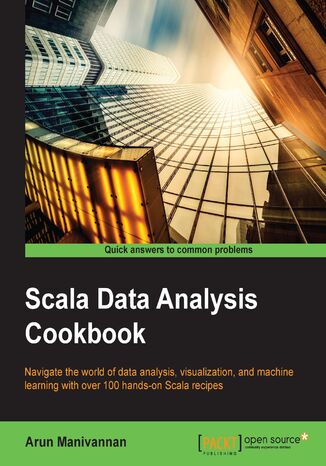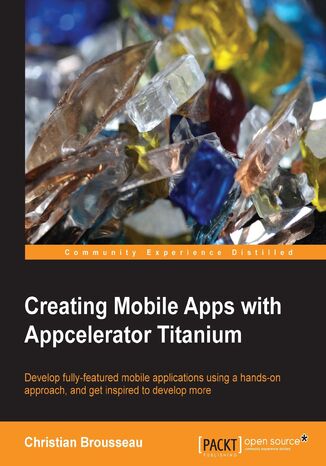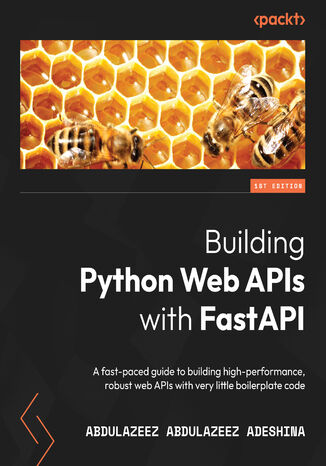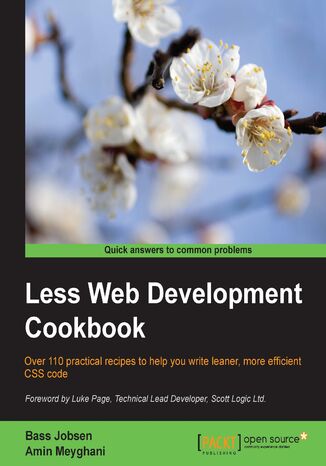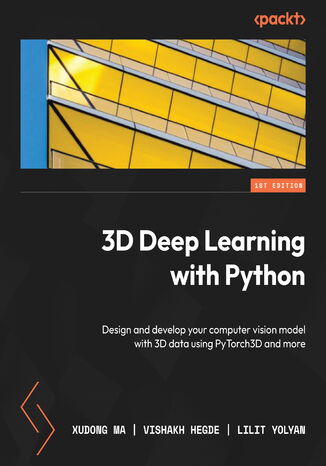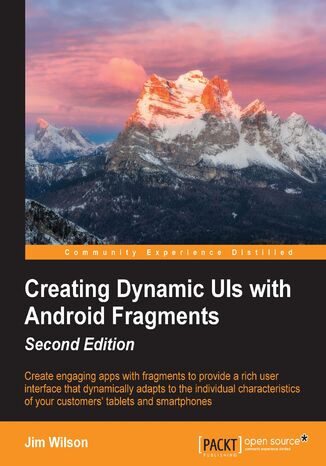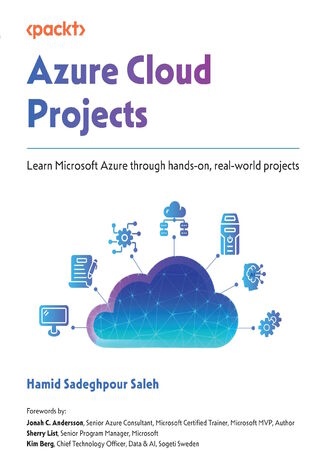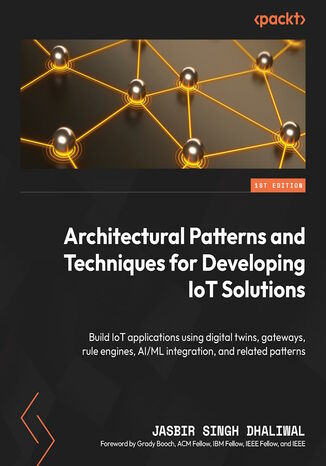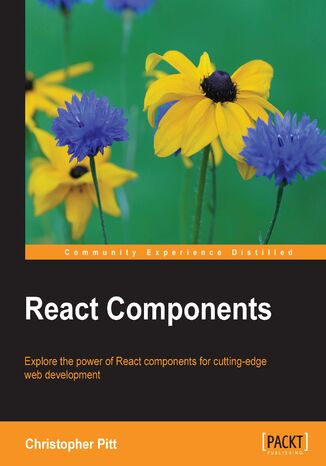Categories
Ebooks
-
Business and economy
- Bitcoin
- Businesswoman
- Coaching
- Controlling
- E-business
- Economy
- Finances
- Stocks and investments
- Personal competence
- Computer in the office
- Communication and negotiation
- Small company
- Marketing
- Motivation
- Multimedia trainings
- Real estate
- Persuasion and NLP
- Taxes
- Social policy
- Guides
- Presentations
- Leadership
- Public Relation
- Reports, analyses
- Secret
- Social Media
- Sales
- Start-up
- Your career
- Management
- Project management
- Human Resources
-
For children
-
For youth
-
Education
-
Encyclopedias, dictionaries
-
E-press
- Architektura i wnętrza
- Health and Safety
- Biznes i Ekonomia
- Home and garden
- E-business
- Ekonomia i finanse
- Esoterecism
- Finances
- Personal finance
- Business
- Photography
- Computer science
- HR & Payroll
- For women
- Computers, Excel
- Accounts
- Culture and literature
- Scientific and academic
- Environmental protection
- Opinion-forming
- Education
- Taxes
- Travelling
- Psychology
- Religion
- Agriculture
- Book and press market
- Transport and Spedition
- Healthand beauty
-
History
-
Computer science
- Office applications
- Data bases
- Bioinformatics
- IT business
- CAD/CAM
- Digital Lifestyle
- DTP
- Electronics
- Digital photography
- Computer graphics
- Games
- Hacking
- Hardware
- IT w ekonomii
- Scientific software package
- School textbooks
- Computer basics
- Programming
- Mobile programming
- Internet servers
- Computer networks
- Start-up
- Operational systems
- Artificial intelligence
- Technology for children
- Webmastering
-
Other
-
Foreign languages
-
Culture and art
-
School reading books
-
Literature
- Antology
- Ballade
- Biographies and autobiographies
- For adults
- Dramas
- Diaries, memoirs, letters
- Epic, epopee
- Essay
- Fantasy and science fiction
- Feuilletons
- Work of fiction
- Humour and satire
- Other
- Classical
- Crime fiction
- Non-fiction
- Fiction
- Mity i legendy
- Nobelists
- Novellas
- Moral
- Okultyzm i magia
- Short stories
- Memoirs
- Travelling
- Narrative poetry
- Poetry
- Politics
- Popular science
- Novel
- Historical novel
- Prose
- Adventure
- Journalism, publicism
- Reportage novels
- Romans i literatura obyczajowa
- Sensational
- Thriller, Horror
- Interviews and memoirs
-
Natural sciences
-
Social sciences
-
School textbooks
-
Popular science and academic
- Archeology
- Bibliotekoznawstwo
- Cinema studies
- Philology
- Polish philology
- Philosophy
- Finanse i bankowość
- Geography
- Economy
- Trade. World economy
- History and archeology
- History of art and architecture
- Cultural studies
- Linguistics
- Literary studies
- Logistics
- Maths
- Medicine
- Humanities
- Pedagogy
- Educational aids
- Popular science
- Other
- Psychology
- Sociology
- Theatre studies
- Theology
- Economic theories and teachings
- Transport i spedycja
- Physical education
- Zarządzanie i marketing
-
Guides
-
Game guides
-
Professional and specialist guides
-
Law
- Health and Safety
- History
- Road Code. Driving license
- Law studies
- Healthcare
- General. Compendium of knowledge
- Academic textbooks
- Other
- Construction and local law
- Civil law
- Financial law
- Economic law
- Economic and trade law
- Criminal law
- Criminal law. Criminal offenses. Criminology
- International law
- International law
- Health care law
- Educational law
- Tax law
- Labor and social security law
- Public, constitutional and administrative law
- Family and Guardianship Code
- agricultural law
- Social law, labour law
- European Union law
- Industry
- Agricultural and environmental
- Dictionaries and encyclopedia
- Public procurement
- Management
-
Tourist guides and travel
- Africa
- Albums
- Southern America
- North and Central America
- Australia, New Zealand, Oceania
- Austria
- Asia
- Balkans
- Middle East
- Bulgary
- China
- Croatia
- The Czech Republic
- Denmark
- Egipt
- Estonia
- Europe
- France
- Mountains
- Greece
- Spain
- Holand
- Iceland
- Lithuania
- Latvia
- Mapy, Plany miast, Atlasy
- Mini travel guides
- Germany
- Norway
- Active travelling
- Poland
- Portugal
- Other
- Przewodniki po hotelach i restauracjach
- Russia
- Romania
- Slovakia
- Slovenia
- Switzerland
- Sweden
- World
- Turkey
- Ukraine
- Hungary
- Great Britain
- Italy
-
Psychology
- Philosophy of life
- Kompetencje psychospołeczne
- Interpersonal communication
- Mindfulness
- General
- Persuasion and NLP
- Academic psychology
- Psychology of soul and mind
- Work psychology
- Relacje i związki
- Parenting and children psychology
- Problem solving
- Intellectual growth
- Secret
- Sexapeal
- Seduction
- Appearance and image
- Philosophy of life
-
Religion
-
Sport, fitness, diets
-
Technology and mechanics
Audiobooks
-
Business and economy
- Bitcoin
- Businesswoman
- Coaching
- Controlling
- E-business
- Economy
- Finances
- Stocks and investments
- Personal competence
- Communication and negotiation
- Small company
- Marketing
- Motivation
- Real estate
- Persuasion and NLP
- Taxes
- Social policy
- Guides
- Presentations
- Leadership
- Public Relation
- Secret
- Social Media
- Sales
- Start-up
- Your career
- Management
- Project management
- Human Resources
-
For children
-
For youth
-
Education
-
Encyclopedias, dictionaries
-
E-press
-
History
-
Computer science
-
Other
-
Foreign languages
-
Culture and art
-
School reading books
-
Literature
- Antology
- Ballade
- Biographies and autobiographies
- For adults
- Dramas
- Diaries, memoirs, letters
- Epic, epopee
- Essay
- Fantasy and science fiction
- Feuilletons
- Work of fiction
- Humour and satire
- Other
- Classical
- Crime fiction
- Non-fiction
- Fiction
- Mity i legendy
- Nobelists
- Novellas
- Moral
- Okultyzm i magia
- Short stories
- Memoirs
- Travelling
- Poetry
- Politics
- Popular science
- Novel
- Historical novel
- Prose
- Adventure
- Journalism, publicism
- Reportage novels
- Romans i literatura obyczajowa
- Sensational
- Thriller, Horror
- Interviews and memoirs
-
Natural sciences
-
Social sciences
-
Popular science and academic
-
Guides
-
Professional and specialist guides
-
Law
-
Tourist guides and travel
-
Psychology
- Philosophy of life
- Interpersonal communication
- Mindfulness
- General
- Persuasion and NLP
- Academic psychology
- Psychology of soul and mind
- Work psychology
- Relacje i związki
- Parenting and children psychology
- Problem solving
- Intellectual growth
- Secret
- Sexapeal
- Seduction
- Appearance and image
- Philosophy of life
-
Religion
-
Sport, fitness, diets
-
Technology and mechanics
Videocourses
-
Data bases
-
Big Data
-
Biznes, ekonomia i marketing
-
Cybersecurity
-
Data Science
-
DevOps
-
For children
-
Electronics
-
Graphics/Video/CAX
-
Games
-
Microsoft Office
-
Development tools
-
Programming
-
Personal growth
-
Computer networks
-
Operational systems
-
Software testing
-
Mobile devices
-
UX/UI
-
Web development
-
Management
Podcasts
As a security consultant, securing your infrastructure by implementing policies and following best practices is critical. This cookbook discusses practical solutions to the most common problems related to safeguarding infrastructure, covering services and features within AWS that can help you implement security models such as the CIA triad (confidentiality, integrity, and availability), and the AAA triad (authentication, authorization, and availability), along with non-repudiation.The book begins with IAM and S3 policies and later gets you up to speed with data security, application security, monitoring, and compliance. This includes everything from using firewalls and load balancers to secure endpoints, to leveraging Cognito for managing users and authentication. Over the course of this book, you'll learn to use AWS security services such as Config for monitoring, as well as maintain compliance with GuardDuty, Macie, and Inspector. Finally, the book covers cloud security best practices and demonstrates how you can integrate additional security services such as Glacier Vault Lock and Security Hub to further strengthen your infrastructure.By the end of this book, you'll be well versed in the techniques required for securing AWS deployments, along with having the knowledge to prepare for the AWS Certified Security – Specialty certification.
NetworkX is a leading free and open source package used for network science with the Python programming language. NetworkX can track properties of individuals and relationships, find communities, analyze resilience, detect key network locations, and perform a wide range of important tasks. With the recent release of version 2, NetworkX has been updated to be more powerful and easy to use.If you’re a data scientist, engineer, or computational social scientist, this book will guide you in using the Python programming language to gain insights into real-world networks. Starting with the fundamentals, you’ll be introduced to the core concepts of network science, along with examples that use real-world data and Python code. This book will introduce you to theoretical concepts such as scale-free and small-world networks, centrality measures, and agent-based modeling. You’ll also be able to look for scale-free networks in real data and visualize a network using circular, directed, and shell layouts.By the end of this book, you’ll be able to choose appropriate network representations, use NetworkX to build and characterize networks, and uncover insights while working with real-world systems.
Learning how to apply artificial intelligence ( AI ) is crucial and can take the fun factor to the next level, whether you're developing a traditional, educational, or any other kind of game. If you want to use AI to extend the life of your games and make them challenging and more interesting, this book is for you.The book starts by breaking down AI into simple concepts to get a fundamental understanding of it. Using a variety of examples, you will work through actual implementations designed to highlight key concepts and features related to game AI in UE4. You will learn to work through the built-in AI framework in order to build believable characters for every game genre (including RPG, Strategic, Platform, FPS, Simulation, Arcade, and Educational). You will learn to configure the Navigation, Environmental Querying, and Perception systems for your AI agents and couple these with Behavior Trees, all accompanied with practical examples. You will also explore how the engine handles dynamic crowds. In the concluding chapters, you will learn how to profile, visualize, and debug your AI systems to correct the AI logic and increase performance.By the end of the book, your AI knowledge of the built-in AI system in Unreal will be deep and comprehensive, allowing you to build powerful AI agents within your projects.
Pragmatic Microservices with C# and Azure introduces .NET Aspire for microservices, focusing on defining an app model, utilizing service discovery, and integrating with Azure's native cloud services. Written by a Microsoft MVP and seasoned software architect with over two decades of experience in .NET, this book will help you get to grips with robust service development using .NET features like minimal APIs, gRPC, and SignalR for real-time communication. Aside from covering essential aspects of DevOps, including testing methodologies such as unit, integration, and load testing, you’ll also explore logging and monitoring including OpenTelemetry using tools like Azure Log Analytics, Application Insights, Prometheus, and Grafana. You'll learn about asynchronous communication leveraging queues and events through Azure Event Hub and Apache. Throughout the book, theoretical aspects will be complemented by practical skills gained from building and deploying a fully functional microservices-based application. By the end, you’ll possess a deep understanding of microservices architecture, hands-on experience with various .NET technologies and Azure services, and the ability to design, build, deploy, and manage microservices applications effectively in both on-premises and cloud environments.
Daven Bigelow, Daven Eric Bigelow
Construct Classic is a free, DirectX 9 game creator for Windows, designed for 2D games. Construct Classic uses an event-based system for defining how the game behaves, in a visual, human-readable way - you don't need to program or script anything at all. It's intuitive for beginners, but powerful enough for advanced users to work without hindrance. You never know when you'll need a helping hand exploring its inner workings, or harnessing its raw power to do your bidding.Construct Game Development Beginner's Guide is the book for you if you have ever felt the urge to make a game of your own. Reading this book will not only teach you to make some popular games using Construct, but you'll also learn the skills necessary to continue on and bring your game ideas to life.Starting as a beginner to Construct Classic, you'll be learning to make platform, puzzle, and shooter games, each styled after popular games of their genre.This guide covers everything from creating animated sprites, to using the built-in physics and shadow engines of Construct Classic. You will learn the skills necessary to make advanced games of your own.Construct Game Development Beginner's Guide will lead you on your journey of making games.
This book will introduce you to the most popular Scala tools, libraries, and frameworks through practical recipes around loading, manipulating, and preparing your data. It will also help you explore and make sense of your data using stunning and insightfulvisualizations, and machine learning toolkits.Starting with introductory recipes on utilizing the Breeze and Spark libraries, get to grips withhow to import data from a host of possible sources and how to pre-process numerical, string, and date data. Next, you’ll get an understanding of concepts that will help you visualize data using the Apache Zeppelin and Bokeh bindings in Scala, enabling exploratory data analysis. iscover how to program quintessential machine learning algorithms using Spark ML library. Work through steps to scale your machine learning models and deploy them into a standalone cluster, EC2, YARN, and Mesos. Finally dip into the powerful options presented by Spark Streaming, and machine learning for streaming data, as well as utilizing Spark GraphX.
It takes talent to be a great photographer, but in the digital era, it also takes a level of technical proficiency. Adobe Photoshop Lightroom Classic was designed as a one-stop solution for photographers to perfect their final products on a desktop-focused workflow, which includes local storage of your photos in files and folders on your computer. Knowing how to efficiently navigate through Lightroom means that you’ll be able to concentrate on being creative instead of wondering “what does this button do”.Complete with step-by-step explanations of essential concepts and practical examples, you will begin with importing photographs into Lightroom. You’ll focus on how to sort through, sequence, develop, and export ready files in various formats, or even design a book and create gallery-ready prints. Next, you will learn how to make informed decisions within Lightroom and how to approach your work depending on the set of photographs you are working on. This guide also illustrates real-life usage and workflow examples that are not just for aspiring professionals, but also for artists and amateurs who are still getting to grips with the technical side of photography.By the end of this book, you'll be confident in importing, editing, sorting, developing, and delivering your photos like a professional.
Smartphones and tablets have really changed the technological landscape over the last 3-4 years. Much like the web did in the last decade, these powerful tools have changed the way people communicate and access information. Such a wide market creates opportunities for developers who have the skills to develop mobile applications.Creating Mobile Apps with Appcelerator Titanium is a practical, step-by-step guide to building iPhone, iPad, and Android applications using JavaScript. This book will give you a solid grounding of the dos and don'ts of mobile development and also covers a lot of the functionalities offered by the Titanium platform.This book begins with a look at what the Titanium platform has to offer. By taking you through clear tutorials on developing each application step-by-step, it helps you to apply your newly acquired knowledge afterwards. The difficulty level gradually increases along the course of the book.Each application from this book covers different aspects of mobile development. Every chapter starts by defining the application's features as well as the user interface structure. Every single code section is then explained and put into context allowing you to gain a clear understanding of their purpose and functionality. The book takes a “small milestone” approach, allowing you to actually run the application and see the progression. Every step is accompanied by many screenshots so you can see the expected result on screen.You will learn everything you need to know to develop your very own mobile applications. The book takes a laid-back approach to Titanium development and provides information in a way designed to never overwhelm the reader with information and also uses clear diagrams, screenshots, and tips throughout.
The new iPad's display and processing power allows for a rich media experience that is unlike any other. Instead of solely consuming media, you can create, edit, and manage everything from Excel documents to HD home movies. The multi-touch interface makes creating and editing intuitive. iCloud syncs documents, movies, music, and images to the cloud for access from all your Apple devices.Instant New iPad Features in iOS 6 How-to will walk you through iCloud setup, project creations, and syncing. If you want to utilize all that your iPad has to offer, this is the book for you. Exploring Apple's suite of apps designed especially for the iPad, these recipes provide easy to follow steps enabling you to become a power user.You'll begin with the basics; setting up Mail, and managing your photos. Each recipe builds upon previous recipes and by the end of the book, you'll have projects in every app within Apple's media suites.If you're interested in using your iPad to the fullest, this book will cover the major applications developed by Apple and take advantage of all of its features. We begin by setting up email, using the VIP inbox, iCloud, and Photostream within the Photos application. We'll then dig a little deeper and explore iPhoto and iMovie, creating slideshows, and creating a video trailer. Lastly, we'll explore the apps within Apple's iWorks suite, learning how to create and edit documents, spreadsheets, and PowerPoint presentations. We will finish the book with a musical note, exploring iTunes and GarageBand. Instant New iPad Features in iOS 6 How-to will walk you through tasks with easy to follow recipes that will give you a great overview on the new iPad and its features.
Abdulazeez Abdulazeez Adeshina
RESTful web services are commonly used to create APIs for web-based applications owing to their light weight and high scalability. This book will show you how FastAPI, a high-performance web framework for building RESTful APIs in Python, allows you to build robust web APIs that are simple and intuitive and makes it easy to build quickly with very little boilerplate code.This book will help you set up a FastAPI application in no time and show you how to use FastAPI to build a REST API that receives and responds to user requests. You’ll go on to learn how to handle routing and authentication while working with databases in a FastAPI application. The book walks you through the four key areas: building and using routes for create, read, update, and delete (CRUD) operations; connecting the application to SQL and NoSQL databases; securing the application built; and deploying your application locally or to a cloud environment.By the end of this book, you’ll have developed a solid understanding of the FastAPI framework and be able to build and deploy robust REST APIs.
Xudong Ma, Vishakh Hegde, Lilit Yolyan
With this hands-on guide to 3D deep learning, developers working with 3D computer vision will be able to put their knowledge to work and get up and running in no time.Complete with step-by-step explanations of essential concepts and practical examples, this book lets you explore and gain a thorough understanding of state-of-the-art 3D deep learning. You’ll see how to use PyTorch3D for basic 3D mesh and point cloud data processing, including loading and saving ply and obj files, projecting 3D points into camera coordination using perspective camera models or orthographic camera models, rendering point clouds and meshes to images, and much more. As you implement some of the latest 3D deep learning algorithms, such as differential rendering, Nerf, synsin, and mesh RCNN, you’ll realize how coding for these deep learning models becomes easier using the PyTorch3D library.By the end of this deep learning book, you’ll be ready to implement your own 3D deep learning models confidently.
Today’s users expect mobile apps to be dynamic and highly interactive, with rich navigation features. These same apps must look fantastic whether running on a medium-resolution smartphone or high-resolution tablet. Fragments provide the toolset we need to meet these user expectations by enabling us to build our applications out of adaptable components that take advantage of the rich capabilities of each individual device and automatically adapt to their differences.This book looks at the impact fragments have on Android UI design and their role in both simplifying many common UI challenges and in providing best practices for incorporating rich UI behaviors. We look closely at the roll of fragment transactions and how to work with the Android back stack. Leveraging this understanding, we explore several specialized fragment-related classes such as ListFragment and DialogFragment. We then go on to discuss how to implement rich navigation features such as swipe-based screen browsing, and the role of fragments when developing applications that take advantage of the latest aspects of Material Design. You will learn everything you need to provide dynamic, multi-screen UIs within a single activity, and the rich UI features demanded by today’s mobile users.
Azure Cloud Projects. Learn Microsoft Azure through hands-on, real-world projects
Hamid Sadeghpour Saleh, Jonah C. Andersson, Sherry List, Kim Berg
Want to get hands-on with Azure and boost your cloud solution skills by working on real-world projects? Azure Cloud Projects is your go-to resource. Written by a seasoned Microsoft Cloud Technologies Architect renowned for his expertise in crafting innovative solutions, this hands-on guide will empower you to build real-world applications using Microsoft Azure.Through hands-on projects, you’ll explore core cloud concepts and gain the experience needed to confidently launch your cloud career. The chapters help you build a strong foundation in cloud computing and Azure services, including how to set up your Azure account and navigate the portal. You’ll learn how to develop increasingly complex solutions as you progress—from configuring networks and deploying web apps to managing databases and containers. Advancing through the chapters, you’ll learn how to implement identity and access controls with Entra ID, automate workflows using Azure Functions, build a CI/CD pipeline with Azure DevOps, and optimize cloud costs for scalable growth.By the end of this book, you’ll have a solid grasp of Azure’s capabilities and a portfolio of practical projects that showcase your job-ready skills and set you up for success in entry-level cloud roles.
Jasbir Singh Dhaliwal, Grady Booch
As the Internet of Things (IoT) expands and moves to new domains, architectural patterns need to enable faster digital transformation and more uniform development. Through numerous use cases and examples, this book helps you conceptualize and implement IoT architectural patterns and use them in diverse contexts in real-world scenarios.The book begins by introducing you to a variety of IoT architectural patterns and then helps you understand how they are used in domains such as retail, smart manufacturing, consumer, smart cities, and smart agriculture. You’ll also find out how cross-cutting concerns such as security require special considerations in the IoT context. As you advance, you’ll discover all the nuances that are inherent in each layer of IoT reference architecture, including considerations related to analytics for edge/constrained devices, data visualizations, and so on. In the concluding chapters, you’ll explore emerging technologies such as blockchain, 3D printing, 5G, generative AI, quantum computing, and large language models (LLMs) that enhance IoT capabilities to realize broader applications.By the end of this book, you’ll have learned to architect scalable, secure, and unique IoT solutions in any domain using the power of IoT architectural patterns, and you will be able to avoid the pitfalls that typically derail IoT projects.
React Components. Explore the power of React components for cutting-edge web development
The reader will learn how to use React and its component-based architecture in order to develop modern user interfaces. A new holistic way of thinking about UI development will establish throughout this book and the reader will discover the power of React components with many examples. After reading the book and following the example application, the reader has built a small to a mid-size application with React using a component based UI architecture. The book will take the reader through a journey to discover the benefits of component-based user interfaces over the classical MVC architecture. Throughout the book, the reader will develop a wide range of components and then bring them together to build a component-based UI. By the end of this book, readers would have learned several techniques to build powerful components and how the component-based development is beneficial over regular web development.

